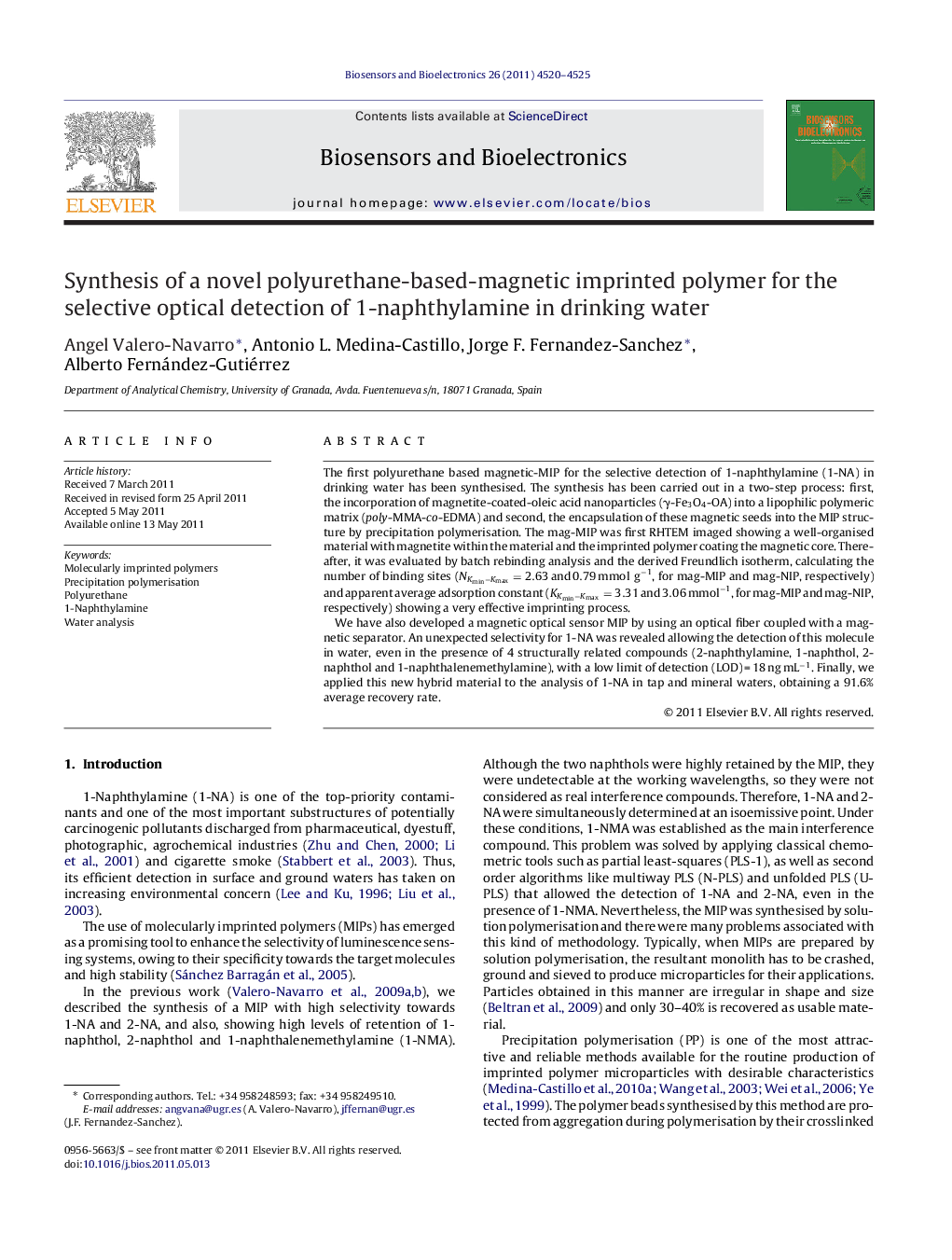| Article ID | Journal | Published Year | Pages | File Type |
|---|---|---|---|---|
| 867723 | Biosensors and Bioelectronics | 2011 | 6 Pages |
The first polyurethane based magnetic-MIP for the selective detection of 1-naphthylamine (1-NA) in drinking water has been synthesised. The synthesis has been carried out in a two-step process: first, the incorporation of magnetite-coated-oleic acid nanoparticles (γ-Fe3O4-OA) into a lipophilic polymeric matrix (poly-MMA-co -EDMA) and second, the encapsulation of these magnetic seeds into the MIP structure by precipitation polymerisation. The mag-MIP was first RHTEM imaged showing a well-organised material with magnetite within the material and the imprinted polymer coating the magnetic core. Thereafter, it was evaluated by batch rebinding analysis and the derived Freundlich isotherm, calculating the number of binding sites (NKmin−Kmax=2.63 and 0.79 mmol g−1NKmin−Kmax=2.63 and 0.79 mmol g−1, for mag-MIP and mag-NIP, respectively) and apparent average adsorption constant (KKmin−Kmax=3.31 and 3.06 mmol−1KKmin−Kmax=3.31 and 3.06 mmol−1, for mag-MIP and mag-NIP, respectively) showing a very effective imprinting process.We have also developed a magnetic optical sensor MIP by using an optical fiber coupled with a magnetic separator. An unexpected selectivity for 1-NA was revealed allowing the detection of this molecule in water, even in the presence of 4 structurally related compounds (2-naphthylamine, 1-naphthol, 2-naphthol and 1-naphthalenemethylamine), with a low limit of detection (LOD) = 18 ng mL−1. Finally, we applied this new hybrid material to the analysis of 1-NA in tap and mineral waters, obtaining a 91.6% average recovery rate.
